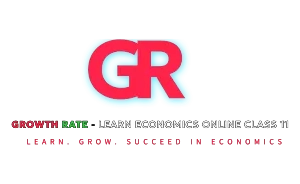The CBSE Class 11 Economics Syllabus for 2025-26, In today’s dynamic world, having a grasp on economics is essential for students as this subject equips them with the tools to analyze complex financial trends and societal issues. For students embarking on their journey into the field of economics, the CBSE Class 11 syllabus for the year 2025-26 presents a structured path designed to build a strong foundation in both statistics and microeconomics. This article will provide a thorough breakdown of the syllabus, highlighting its sections and specific topics to help students comprehend what they need to focus on as they prepare for their examinations.
Table of Contents
Overview of the Syllabus
The CBSE Class 11 Economics Syllabus for 2025-26,The Class 11 economics curriculum is divided into two major parts: Part A Statistics for Economics and Part B Introductory Microeconomics.
Part A: Statistics for Economics
Statistics is more than just numbers; it’s about understanding data and how to interpret it to present meaningful insights. The first part of the syllabus centers around this concept and is composed of various subtopics.
Introduction
This section lays the groundwork for the study of the meaning of economics and statistics. Students will explore fundamental concepts that will prepare them for deeper topics down the line.
- What is Economics?
- Meaning, scope, functions and importance of statistics in Economics
Collection, Organisation and Presentation of Data (15 Marks)
- Collection of Data: This involves understanding primary and secondary data sources, along with methods of data collection such as surveys, experiments, and observational studies.
- Organisation of Data: Students will learn techniques for organizing data, such as frequency distribution tables and charts.
- Presentation of Data: This segment covers how to visually represent data using graphs and diagrams. Key learning outcomes include:
- Understanding line graphs, bar graphs, and pie charts.
- The importance of visual representation in simplifying complex data.
- Tabular Presentation and Diagrammatic Presentation of Data: (i) Geometric forms (bar diagrams and pie diagrams), (ii) Frequency diagrams (histogram, polygon and Ogive) and (iii) Arithmetic line graphs (time series graph).
Statistical Tools and Interpretation (25 Marks)
Here, students delve into vital statistical concepts and techniques:
- Measures of Central Tendency: Mean, median, and mode are critical in understanding data’s distribution and tendency.
- Interpretation of Data: This section emphasizes critical analysis, teaching students how to draw conclusions and make informed decisions based on their findings.
- Correlation – meaning and properties, scatter diagram; measures of correlation – Karl Pearson’s method (two variables ungrouped data), Spearman’s rank correlation (Non-Repeated Ranks and Repeated Ranks).
- Introduction to Index Numbers – meaning, types – Wholesale Price Index, Consumer Price Index and index of industrial production, uses of index numbers; Inflation and Index Numbers, Simple Aggregative Method.
### “Statistics is the language of data and understanding its nuances is crucial for aspiring economists.”
Part B: Introductory Microeconomics
The CBSE Class 11 Economics Syllabus for 2025-26, This section introduces key concepts of microeconomics and focuses on how individual consumers and producers make decisions.
Introduction (4 Marks)
Students will get an overview of microeconomics, emphasizing its significance in economic theory and real-world applications.
- Meaning of microeconomics and macroeconomics; positive and normative economics
- What is an economy? Central problems of an economy: what, how and for whom to produce; concepts of Production Possibility Frontier and Opportunity Cost.
Consumer’s Equilibrium and Demand (14 Marks)
- Consumer’s Equilibrium: This concept helps students understand how consumers make choices to maximize utility. Consumer’s equilibrium – meaning of Utility, Marginal Utility, Law of Diminishing Marginal Utility, conditions of consumer’s equilibrium using marginal utility analysis.Indifference curve analysis of consumer’s equilibrium-the consumer’s budget (budget set and budget line), preferences of the consumer (indifference curve, indifference map) and conditions of consumer’s equilibrium.
- Law of Demand: Students will explore factors affecting demand, including price changes and shifts in consumer preferences.Demand, market demand, determinants of demand, demand schedule, demand curve and its slope, movement along and shifts in the demand curve; price elasticity of demand – factors affecting price elasticity of demand; measurement of price elasticity of demand – percentage-change method and total expenditure method.
Producer Behaviour and Supply (14 Marks)
- Production – Meaning of Production Function – Short-Run and Long-Run.Total Product, Average Product and Marginal Product.Returns to a Factor
- Cost – Short run costs – Total Cost, Total Fixed Cost, Total Variable Cost; Average Cost; Average Fixed Cost, Average Variable Cost and Marginal Cost – meaning and their relationships.
- Revenue – Total Revenue, Average Revenue and Marginal Revenue – meaning and their relationship.
- Producer’s Equilibrium – meaning and its conditions in terms of Marginal Revenue-Marginal Cost.
- Theory of Supply – Supply, market supply, determinants of supply, supply schedule, supply curve and its slope, movements along and shifts in supply curve, price elasticity of supply, measurement of price elasticity of supply – percentage-change method.
Forms of Market and Price Determination under Perfect Competition (8 Marks)
- Perfect competition – Features; Determination of market equilibrium and effects of shifts in demand and supply. (Short Run Only)
- Simple Applications of Demand and Supply: Price ceiling, Price floor.
Preparing for Exams
To succeed in the Class 11 Economics examination, students should:
- Understand Concepts: Ensure a solid grasp of all fundamental concepts outlined in the syllabus.
- Practice Problems: Regular practice with statistical problems and microeconomic scenarios can enhance understanding and retention.
- Group Study: Engaging with peers for discussions can provide new insights and enhance comprehension of complex topics.
Conclusion
The CBSE Class 11 Economics Syllabus for 2025-26 provides a comprehensive blueprint for students aiming to acquire foundational knowledge in both statistics and microeconomics. By focusing on key areas and utilizing effective study techniques, students can excel in their examinations and develop an appreciation for the role economics plays in our daily lives.
### Key Takeaway: “Embrace the study of economics as a pathway to understanding the intricate workings of our society.”
For more information on curriculum specifics, students can visit the official CBSE website. Engaging with the materials and consistently practicing will not only prepare students for exams but also inspire a genuine interest in the field of economics.
Q1. What is the overall structure of the CBSE Class 11 Economics syllabus for 2025–26?
A: The syllabus is designed to balance theoretical knowledge with practical application. The subject is divided into a theory component (worth 80 marks) and a project component (worth 20 marks), making a total of 100 marks. The theoretical part is further split into two main sections:
Part A: Statistics for Economics (40 Marks) – This section lays the foundation in statistical methods essential for economic analysis.
Part B: Introductory Microeconomics (40 Marks) – This part introduces core concepts of microeconomics, exploring topics like consumer behavior, producer dynamics, and market structures.
Additionally, Part C: Project Work (20 Marks) encourages students to apply their learning in practical projects that relate to real-life economic scenarios.
What is the rationale for including project work (Part C) in the syllabus?
The inclusion of project work serves several important purposes:
Practical Application: It bridges the gap between textbook theory and real-world economic issues, allowing students to engage in hands-on learning.
Analytical Skill Development: Through projects, learners develop research, analysis, and presentation skills, which are increasingly vital in understanding and interpreting economic data.
Enhanced Engagement: By working on projects, students learn to approach economic problems creatively and collaboratively, reinforcing their classroom learning with practical experiences.
What has been emphasized in the updated 2025–26 syllabus?
For the 2025–26 session, the CBSE has focused on:
Conceptual Understanding: The updated curriculum stresses deep comprehension over rote learning.
Competency-Based Questions: Emphasis is placed on problem-solving and practical applications.
Real-World Relevance: There is a clear push to relate economic theories to current economic scenarios and data, which encourages students to think critically about the role of economics in everyday life.
Integrated Learning: By combining theory with project work, the syllabus aims to cultivate well-rounded analytical skills that are vital for both further studies and everyday decision-making.
Where can I access the official CBSE syllabus and additional resources?
The official CBSE syllabus along with detailed guidelines and metric distributions is available on the CBSE Academic website (https://cbseacademic.nic.in) in PDF format. Several educational portals also host the syllabus along with exam patterns, study tips, and practice materials. It is advisable to refer to these trusted sources to ensure you have the most accurate and updated information.





